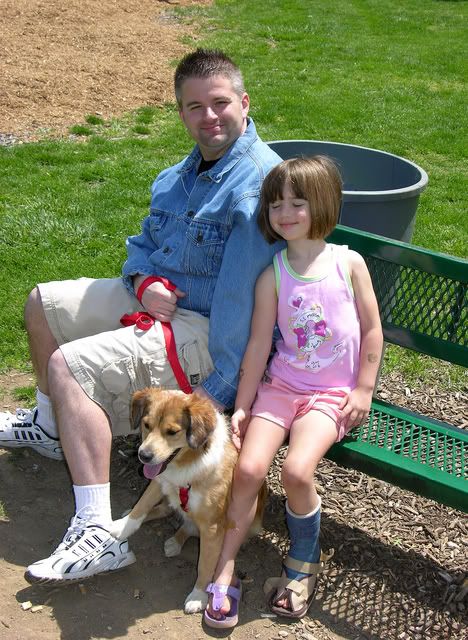
These days there are a lot of professional services available to pet owners. This was not the case when I was growing up when the only animal expert was the local veterinarian.
Today, only abut ten percent of cat and dog owners find their veterinarians through referral, most pick a veterinarian because the clinic is located in a convenient location.
Recently, I demanded that my boyfriend pick from a list of feline practitioners because his feline needed a decent veterinary clinic that could handle a domestic wildcat (as in nasty creature not exotic).
Today we drive about and over and hour and a half to get to the clinic.
Novice pet owners often don’t search for the right veterinarian. It can be as daunting as finding a human dentist or doctor and today animal care is much more complicated—and expensive.
The last statistics I saw were that the total cost of veterinary care in 2001 was about $19 billon which was up $7.2 billion from 1991.
In those ten years, the average cost of a veterinary visit almost doubled.
I know on our end, the office visit averages just under $100 but usually is more than $200 by the time we get out of there.
We also board the cat when we travel due to the fact that she has unique medicine needs that need to be addressed twice a day.
I had to laugh when we got a great discount for our hotel in Las Vegas, Nevada but ended up paying about the same since the cat’s boarding cost more than our hotel’s discounted rate!
Here are five tips for picking a veterinarian:
1. Determine what type of practitioner you seek.
Are you pro holistic remedies or special diets? Do you do a lot of research online? Do you have one specific species as a pet or a variety?
For instance, our current veterinarian is a feline practitioner who believes in all meat diets for felines.
We picked her because the local holistic veterinarian did not do blood or urine work on Cinderella when she had lost half of her body weight.
The local vet was lazy and as a result misdiagnosed the situation. After we demanded blood work she still did not determine what the issue was.
After two local trips to the vet with no results or actions to address the situation, I sent my boyfriend a list and asked him to pick from a list of specialists in the region.
I wanted someone who was not afraid of the princess (aka demoness) and only specialized in felines who would identify the issue and give us a diagnosis we could address.
2. Ask other pet owners and pet professionals for referrals.
As others what they like and dislike about their veterinarians. Ask for names and numbers.
Other pet businesses or rescue groups in the area are often good sources of referrals because they hear both pro and con or experience both at the local area veterinary clinics.
In my area this is a standard procedure because we are a small town and people trust word of mouth.
Unfortunately, my clients tell me about all their bad experiences at the local clinics. The second clinic is a corporate model and now they just see you as a checklist of services when you walk through the door.
Recently, a local Afghan rescue lost a pup due to sloppiness. The pup was taken into the Emergency Veterinary Clinic with hypothermia. The next morning the animal was taken into surgery for a spay—of course she died.
When asked about the decision the veterinarian was not aware that the dog was brought in to emergency for hypothermia.
Today this client drives almost two hours to a veterinarian who specializes in Afghan hounds but it was a tough lesson to get her there.
3. Create a list of prospects and survey them.
If you have just one species in the home you might consider taking a look at members of the veterinary specialist groups that exist. There are those that handle large animals (horses and other livestock) and cat only clinics.
In the past, there were few veterinarians that handled exotic animals such as reptiles or birds. Today you can find practices that specialize in those species, too.
After collecting recommendations or doing research online (find the specialist professional organizations to locate local members), conduct a phone survey of the clinics you are considering.
Ask a few questions about the practice and specialties.
4. Visit and quiz the finalists.
Narrow your list down to three. Make appointments to visit all the clinics you thing might be a good choice and ask to meet the veterinarian.
After our appointment with the feline specialist we were given a tour of the clinic by the veterinarian. It was clean and very modern. We also liked how the veterinary technicians handled our domestic demoness and how all the animals looked in the clinic.
While you visit the clinic, sniff the air and check out the cleanliness. Watch the interactions between the clients, animals, techs, and veterinarian.
Ask the veterinarian about controversial subjects such as raw diets or live-saving measures in dire circumstances. This is a good way to see if the veterinarian’s viewpoints and philosophy meshes with yours.
5. Pay attention to your instincts.
If you don’t have a good feeling about a clinic or a recommendation—pay attention to it and follow your instinct.
Ideally, you will be able to discuss things with your veterinarian in a two way discussion.
The ideal situation is your veterinarian will consider what you have to say and will consider your point of view. Don’t faint if he or she says, “Let me check into this and get back to you.”
I’ve always had professional courtesy extended to me from the local veterinary clinics.
On one visit, I was sure my dog had picked up a foxtail but the first vet argued with me about it because he could not find it.
He gave me eye drops for the issue.
However, I paid attention to my instincts and asked to see one of the senior veterinarians—who found and removed the foxtail.
When our eyes meet after he pulled it out—nothing had to be said. He knew and I knew that it was a good thing that I stood by my instincts and saved my dog from agony and complications.
Go with your gut is my recommendation and take your time picking your pet professionals.
Do you have a favorite veterinarian or clinic? Let me know in the comments below.


